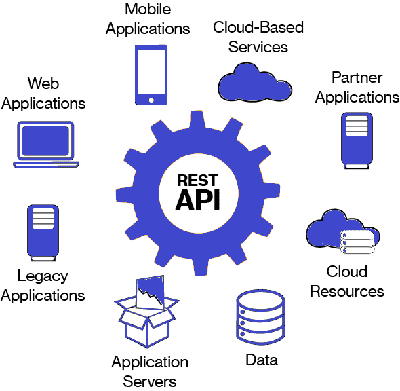
“APIs provide your users with increased flexibility, data integration capabilities, automation possibilities, and the ability to customize and extend the platform’s functionality. By leveraging APIs, users can optimize processes, gain real-time insights, integrate with other systems, and drive innovation within the electrical distribution ecosystem.”
Data Integration: APIs allow users to integrate the electrical distribution platform with other systems, applications, or devices. Users can retrieve and exchange data seamlessly between the platform and external systems, enabling a unified view of information. This integration facilitates data sharing, eliminates manual data entry or duplication, and streamlines workflows by connecting different components of the electrical distribution ecosystem.
Automation and Efficiency: APIs enable users to automate various processes and tasks within the electrical distribution platform. They can programmatically access functionality, retrieve data, and perform actions, reducing manual effort and increasing operational efficiency. Users can develop custom applications or scripts that leverage the platform’s APIs to automate routine tasks, perform data analysis, or trigger actions based on specific events or conditions.
Customization and Extensibility: APIs empower users to customize and extend the functionality of the electrical distribution platform to suit their specific needs. They can develop add-ons, plugins, or integrations that enhance or extend the platform’s capabilities. APIs provide a standardized and controlled way for users to interact with the platform’s features, enabling flexibility and adaptability to evolving requirements.
Real-time Data Access: APIs enable users to access real-time or near real-time data from the electrical distribution platform. They can retrieve information on energy consumption, power quality, grid status, and other relevant data in real time. This real-time data access allows users to monitor, analyze, and respond quickly to changing conditions, enabling proactive decision-making and improving operational efficiency.
Advanced Analytics and Insights: APIs provide access to data that can be used for advanced analytics and insights. Users can extract raw data from the electrical distribution platform and integrate it with analytics tools or data visualization platforms. This allows for in-depth analysis, trend identification, predictive modeling, and actionable insights that can drive optimization, energy efficiency improvements, and informed decision-making.
Integration with Third-Party Services: APIs facilitate integration with third-party services or solutions that complement the electrical distribution platform. Users can connect with energy management systems, demand response platforms, billing systems, or other relevant solutions through APIs. This integration allows for seamless data exchange, coordination, and interoperability between different systems, enhancing the overall capabilities and value proposition of the electrical distribution platform.
Developer Ecosystem and Innovation: APIs foster a developer ecosystem around the electrical distribution platform. By providing well-documented and accessible APIs, the platform encourages developers to build applications, tools, and services that integrate with and enhance the platform’s functionality. This promotes innovation, encourages collaboration, and enables users to leverage a wide range of solutions and integrations developed by the community.
Scalability and Future-proofing: APIs ensure that your electrical distribution platform remains scalable and adaptable to changing technology landscapes. Users can leverage APIs to build scalable applications, integrate new technologies, or accommodate future requirements. This future-proofing capability allows the platform to evolve alongside technological advancements, ensuring its relevance and usefulness over time.